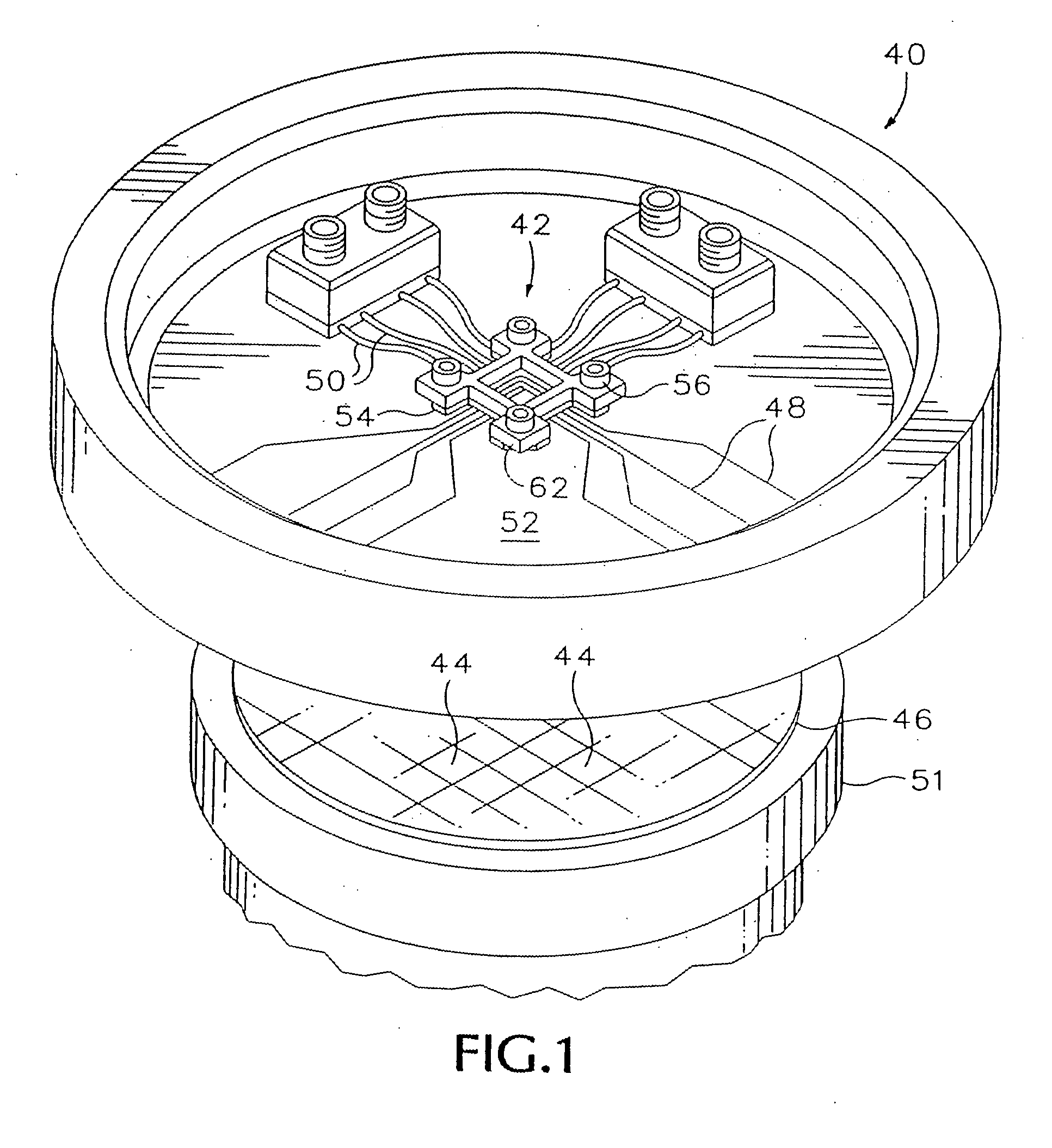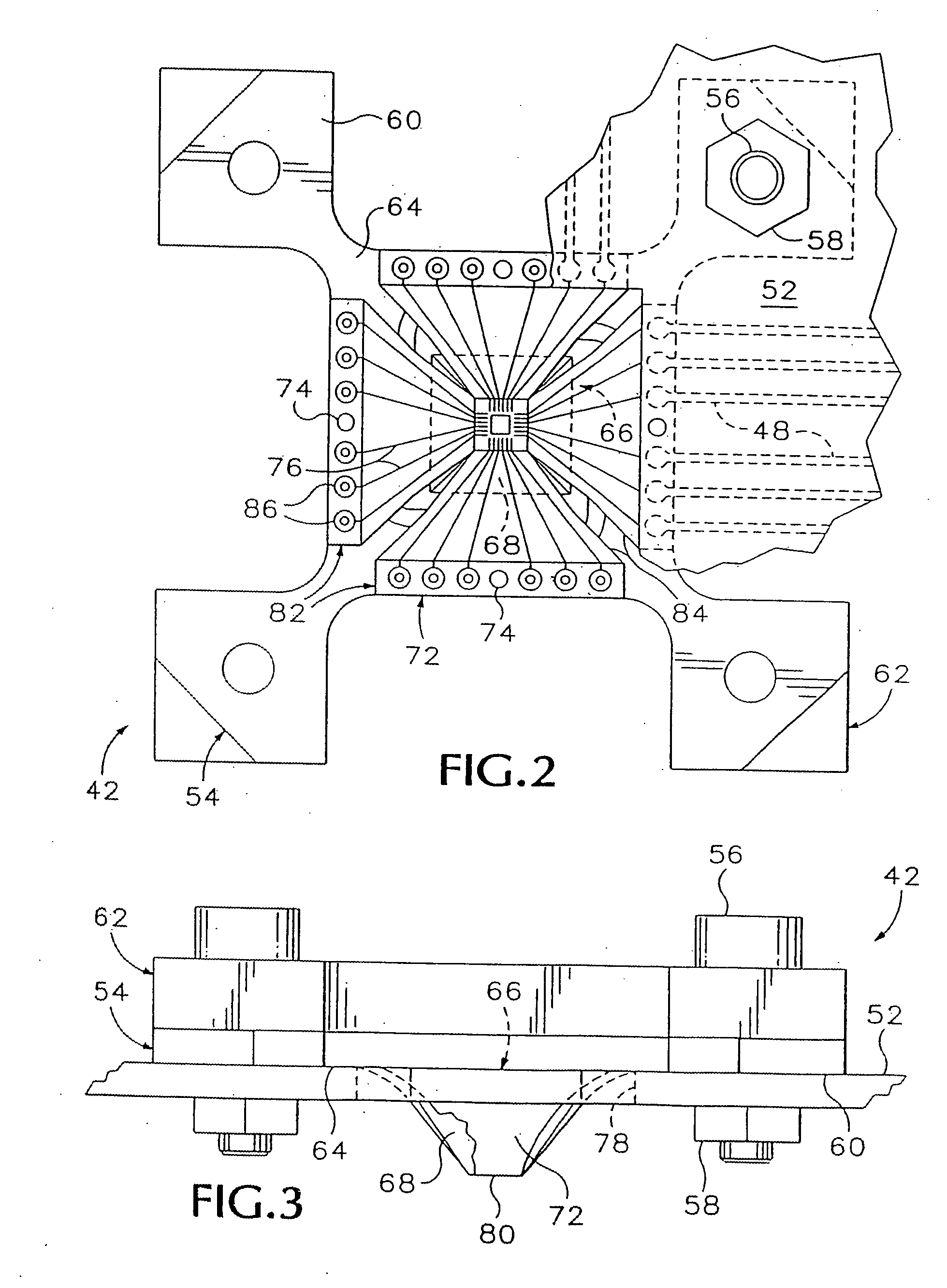Membrane probing system with local contact scrub
a probe system and probe body technology, applied in the field of probe assemblies, can solve problems such as ineffective electrical performance, and achieve the effects of avoiding mechanical straining of each beam, adequate contact-to-pad pressure, and ineffective electrical performan
- Summary
- Abstract
- Description
- Claims
- Application Information
AI Technical Summary
Benefits of technology
Problems solved by technology
Method used
Image
Examples
Embodiment Construction
[0034]FIG. 1 shows a probe head 40 for mounting a membrane probing assembly 42 constructed in accordance with the present invention. In order to measure the electrical performance of a particular die area 44 included on the silicon wafer 46, the high-speed digital lines 48 and / or shielded transmission lines 50 of the probe head are connected to the input / output ports of the test instrumentation by a suitable cable assembly, and the chuck 51 which supports the wafer is moved in mutually perpendicular X,Y,Z directions in order to bring the pads of the die area into pressing engagement with the contacts included on the lower contacting portion of the membrane probing assembly.
[0035] The probe head 40 includes a probe card 52 on which the data / signal lines 48 and 50 are arranged. Referring to FIGS. 2-3, the membrane probing assembly 42 includes a support element 54 formed of incompressible material such as a hard polymer. This element is detachably connected to the upper side of the pr...
PUM
 Login to View More
Login to View More Abstract
Description
Claims
Application Information
 Login to View More
Login to View More - R&D
- Intellectual Property
- Life Sciences
- Materials
- Tech Scout
- Unparalleled Data Quality
- Higher Quality Content
- 60% Fewer Hallucinations
Browse by: Latest US Patents, China's latest patents, Technical Efficacy Thesaurus, Application Domain, Technology Topic, Popular Technical Reports.
© 2025 PatSnap. All rights reserved.Legal|Privacy policy|Modern Slavery Act Transparency Statement|Sitemap|About US| Contact US: help@patsnap.com



